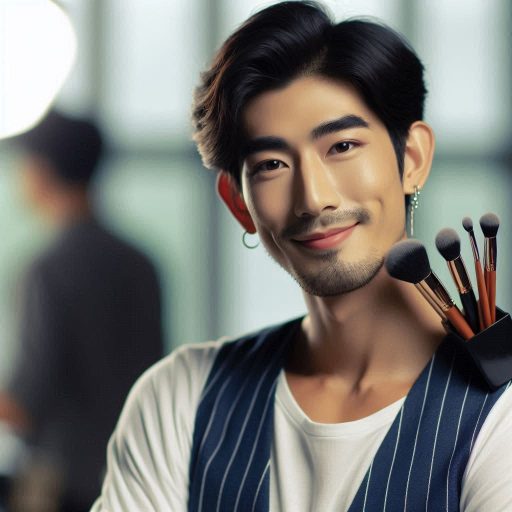Introduction
Special effects are techniques used in film and TV to create illusions beyond the natural realm.
These effects play a crucial role in enhancing the visual appeal and storytelling of movies and shows.
As technology advances, special effects become more sophisticated and realistic, captivating audiences worldwide.
Now, let’s delve into the fascinating history of special effects in the realm of entertainment.
Early Beginnings of Special Effects
Introduction of special effects in silent films
Special effects have been an integral part of filmmaking since the early days of cinema.
In the early 20th century, with the advent of silent films, filmmakers began experimenting with various techniques to enhance the visual storytelling on screen.
Use of practical effects such as stop-motion animation
One of the earliest pioneers of special effects in film was Georges M‘li‘s, a French filmmaker known for his innovative use of visual tricks and illusions.
M‘li‘s incorporated techniques such as double exposure and jump cuts to create magical and surreal effects in his films.
Impact of Georges M‘li‘s on early special effects in film
Additionally, practical effects like stop-motion animation were commonly used in early films to create fantastical creatures and objects that were not possible to achieve using traditional methods.
These techniques laid the foundation for future advancements in the field of special effects.
Overall, the early days of special effects in film were marked by experimentation and innovation, paving the way for the spectacular visual effects we see in modern cinema today.
Read: Breaking into the Hollywood SFX Industry
Development of Technological Advancements
Introduction of sound in films and its impact on special effects
With the advent of sound in films, special effects took on a new dimension.
Sound added a layer of realism to visual effects, enhancing the overall viewer experience.
Explosions, crashes, and other action sequences became more immersive with synchronized sound effects, creating a more dynamic and engaging narrative.
Use of matte paintings and miniatures in creating visual effects
Matte paintings and miniatures also played a crucial role in the evolution of special effects.
Matte paintings were used to create intricate backgrounds or landscapes that were otherwise difficult or impossible to film on location.
Miniatures, on the other hand, allowed filmmakers to create detailed sets or models for various scenes, such as spaceship battles or city destruction, without actually putting actors or crew in harm’s way.
Advancements in camera technology for special effects shots
The advancements in camera technology further revolutionized special effects in film and TV.
High-speed cameras enabled filmmakers to capture fast-action sequences with precision, while motion-control cameras allowed for seamless integration of live-action footage with computer-generated imagery (CGI).
Transform Your Career Today
Unlock a personalized career strategy that drives real results. Get tailored advice and a roadmap designed just for you.
Start NowAdditionally, 3D stereoscopic cameras provided a more immersive viewing experience, making special effects feel even more realistic and engaging.
In essence, the development of technological advancements in the film and TV industry has significantly impacted the evolution of special effects.
From the introduction of sound to the use of matte paintings, miniatures, and advanced camera technology, filmmakers have been able to push the boundaries of visual storytelling and create more immersive and captivating cinematic experiences for audiences worldwide.
Golden Age of Special Effects
Rise of iconic special effects studios like Industrial Light and Magic
The Golden Age of special effects marked a revolution in film and television.
This era saw the rise of iconic studios and groundbreaking technologies.
Industrial Light and Magic (ILM) emerged as a key player.
Founded by George Lucas in 1975, ILM transformed visual effects.
The studio‘s innovations set new industry standards.
One of ILM‘s early successes was its work on Star Wars (1977).
The film showcased pioneering effects techniques, creating stunning space battles and alien worlds.
This success established ILM as a leader in the field.
Introduction of computer-generated imagery (CGI) in films
The introduction of computer-generated imagery (CGI) was a game-changer. CGI allowed for more intricate and realistic effects than ever before.
Films began to use CGI to create complex visuals that were previously impossible.
This technology provided filmmakers with new creative tools and expanded the possibilities of special effects.
Blockbuster films like Star Wars and Jurassic Park showcasing groundbreaking special effects
A prime example of CGI‘s impact was Jurassic Park (1993).
Directed by Steven Spielberg, the film featured lifelike dinosaurs brought to life through CGI.
The visual effects in Jurassic Park set a new benchmark for realism in film.
Audiences were awed by the dinosaurs‘ movements and interactions, which felt incredibly real.
The Golden Age was marked by these advancements, with studios like ILM leading the way.
CGI transformed the landscape of special effects, allowing filmmakers to push the boundaries of imagination.
Transform Your Career Today
Unlock a personalized career strategy that drives real results. Get tailored advice and a roadmap designed just for you.
Start NowBlockbuster films like Star Wars and Jurassic Park showcased the power of these new technologies, captivating audiences worldwide.
The era not only defined a generation of special effects but also laid the groundwork for future innovations in film and television.
Read: Collaborating with Directors as an SFX Artist
Evolution of Practical Effects
Practical effects have been a crucial element in creating realistic visuals in film and TV.
These effects involve physical elements manipulated on set to achieve desired outcomes.
Importance of practical effects in creating realistic visuals
Practical effects bring a tangible and authentic quality to visuals that digital effects often struggle to replicate.
They add weight and depth to the scenes, making them more believable to the audience.
Use of animatronics and puppetry in special effects
Animatronics and puppetry are practical effects techniques used to bring creatures and characters to life on screen.
These methods involve mechanical movements and controlled manipulation by puppeteers to create realistic movements and expressions.
Collaboration between practical and digital effects in modern films
In today’s film industry, practical effects are often used in conjunction with digital effects to create seamless, dynamic visuals.
By combining the two techniques, filmmakers can achieve a level of realism and complexity that enhances the overall visual experience for the audience.
Overall, the evolution of practical effects in film and TV has shown a continuous push for innovation and creativity.
The integration of practical effects with digital technology has opened up new possibilities for filmmakers to bring their visions to life on screen.
As technology advances, we can expect to see even more impressive and immersive practical effects in future films and TV shows.
Read: Impact of Digital Tools on SFX Art and Design

Influence of Special Effects on Television
The transition of special effects techniques from film to TV
Special effects have played a significant role in enhancing the visual appeal of television shows.
The transition of special effects techniques from film to TV has been a game-changer in the industry.
Impact of shows like Doctor Who and Star Trek on special effects in television
Shows like Doctor Who and Star Trek have been pioneers in pushing the boundaries of special effects on television.
They demonstrated the potential for using visual effects to create immersive worlds on a smaller screen.
With the rise of streaming services, there has been a newfound focus on creating high-quality visual effects for TV shows.
Transform Your Career Today
Unlock a personalized career strategy that drives real results. Get tailored advice and a roadmap designed just for you.
Start NowThese platforms have allowed creators to experiment with more ambitious special effects without the constraints of traditional broadcast television.
Advances in TV special effects with the rise of streaming services
Advances in technology have also been a driving force behind the evolution of TV special effects.
The use of computer-generated imagery (CGI) has become more prevalent in television, allowing for seamless integration of special effects into storytelling.
Overall, the influence of special effects on television has been profound, shaping the way audiences engage with and experience TV shows.
The future of TV special effects looks promising, with continued advancements in technology and a growing demand for visually captivating content.
Read: Innovative SFX Techniques in Modern Cinema
The Digital Revolution
Adoption of CGI as a dominant special effects technique
With the advancement of technology, the digital revolution in special effects has opened up a whole new world of possibilities for filmmakers.
One of the most significant developments in this revolution is the widespread adoption of Computer-Generated Imagery (CGI) as a dominant special effects technique.
CGI allows filmmakers to create incredibly realistic and visually stunning effects that were previously impossible to achieve using practical effects alone.
Films like Avatar pushing the boundaries of digital effects
Films like James Cameron’s “Avatar” have been at the forefront of pushing the boundaries of digital effects.
Released in 2009, “Avatar” was a groundbreaking film that showcased the potential of CGI in creating immersive and visually stunning worlds.
The film’s use of CGI to create the lush world of Pandora and its alien inhabitants set a new standard for what was possible in filmmaking.
Integration of motion capture technology in creating realistic characters
Another key development in the digital revolution is the integration of motion capture technology in creating realistic characters.
Motion capture technology involves capturing the movements of actors and translating them into digital characters, allowing for incredibly lifelike performances.
This technology has been used in films like “The Lord of the Rings” and “The Jungle Book” to bring fantastical creatures and characters to life in a way that was previously unimaginable.
In general, the digital revolution in special effects has fundamentally changed the landscape of filmmaking.
With the widespread adoption of CGI, films like “Avatar” have pushed the boundaries of what is possible with digital effects, while the integration of motion capture technology has allowed for the creation of incredibly realistic characters.
As technology continues to advance, the possibilities for special effects in film and TV are boundless.
Discover More: Common Challenges in Interactive Media Design
Impact of Special Effects on Storytelling
Role of special effects in enhancing narrative and world-building
The role of special effects in enhancing narrative and world-building cannot be overstated.
Transform Your Career Today
Unlock a personalized career strategy that drives real results. Get tailored advice and a roadmap designed just for you.
Start NowSpecial effects allow filmmakers to create immersive environments and fantastical creatures that transport viewers to different worlds and time periods.
Whether it’s a space opera set in a distant galaxy or a fantasy epic filled with mythical creatures, special effects help bring these imaginative stories to life.
Challenges of balancing practical and digital effects for storytelling
One of the key challenges in using special effects for storytelling is finding the right balance between practical effects and digital effects.
While practical effects, such as makeup and animatronics, can create a sense of realism, digital effects offer limitless possibilities for creating otherworldly creatures and environments.
Filmmakers must carefully consider when to use each type of effect to best serve the story.
Examples of films and TV shows where special effects elevate the storytelling experience
Avatar (2009)
The groundbreaking special effects in James Cameron’s Avatar helped transport audiences to the lush, alien world of Pandora.
The film’s use of motion capture technology and CGI created a visually stunning and immersive experience that captivated viewers around the world.
Game of Thrones (2011-2019)
The HBO series Game of Thrones featured impressive special effects that brought the fantasy world of Westeros to life.
From giant dragons to elaborate battle sequences, the show’s visual effects team worked tirelessly to create a believable and awe-inspiring world that captured the essence of George R.R. Martin’s epic novels.
Jurassic Park (1993)
Steven Spielberg’s Jurassic Park revolutionized the use of CGI in filmmaking, showcasing realistic dinosaurs that captured the imaginations of audiences worldwide.
The film’s seamless blend of practical effects and computer-generated imagery set a new standard for visual effects in cinema.
In a nutshell, special effects play a crucial role in storytelling by enhancing the visual elements of a film or TV show and contributing to the overall immersive experience for viewers.
When used effectively, special effects can elevate storytelling to new heights and create unforgettable cinematic experiences.
Conclusion
Special effects have significantly transformed film and TV, evolving from simple practical techniques to sophisticated digital creations.
In the early days, filmmakers used practical effects like miniatures and matte paintings to create illusions.
These methods laid the groundwork for future innovations.
The advent of CGI in the 1990s marked a pivotal moment, revolutionizing how special effects were produced and perceived.
Movies like Jurassic Park showcased the power of digital effects, setting new standards for the industry.
The impact of special effects on the entertainment industry is profound.
They have enabled creators to bring fantastical worlds and characters to life, pushing the boundaries of visual storytelling.
Transform Your Career Today
Unlock a personalized career strategy that drives real results. Get tailored advice and a roadmap designed just for you.
Start NowToday, special effects drive the visual spectacle of blockbuster films and TV shows, captivating audiences with their realism and creativity.
It is essential to recognize the artistry and innovation behind special effects.
The work of visual effects artists combines technical skill with creative vision.
Their contributions enhance the narrative and immerse audiences in the story.
As technology continues to advance, special effects will keep evolving, offering new ways to tell compelling stories.
We should appreciate the craft of special effects as a crucial element of modern entertainment.
They are more than just visual enhancements; they are integral to creating memorable and impactful storytelling experiences.




